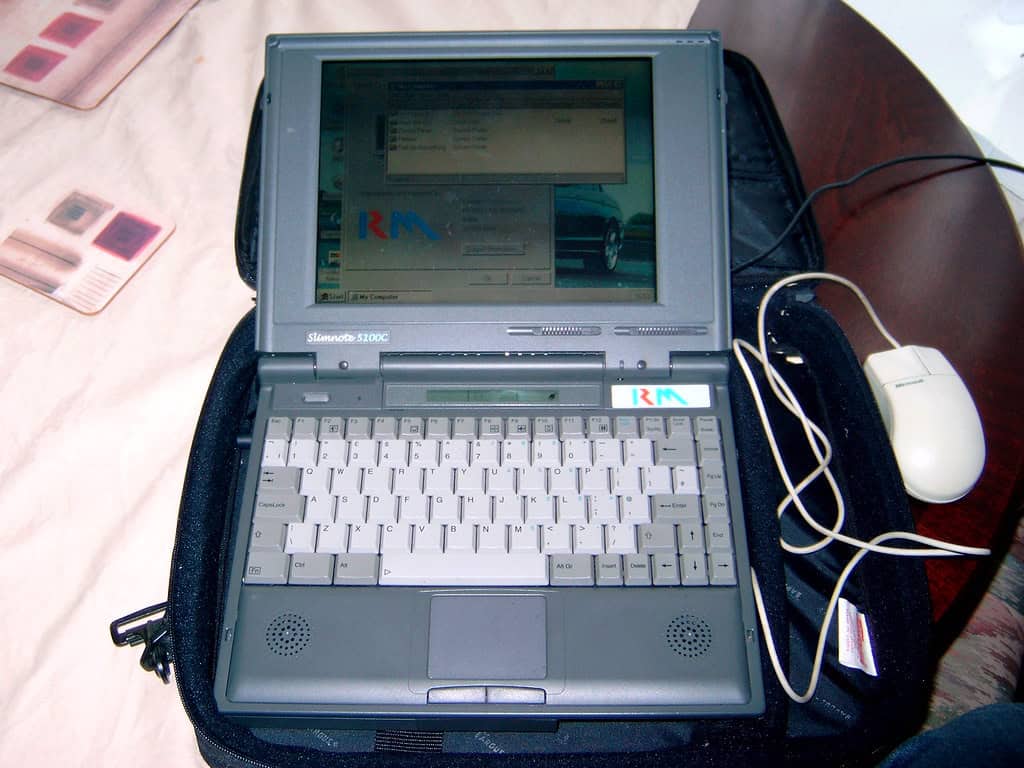The Packard Bell Statesman was a popular laptop, at least by 1994’s standards. However, before we dive more into it, it is important to understand the historical context. 30 years ago, laptops weren’t anything to write home about. Connectivity was minimal, battery life abysmal, and you were lucky if your laptop had upgradable components.
But, let’s explore why the Statesman is such a popular laptop for its time.
The Hardware
The Packard Bell Statesman was a collaboration between the now-defunct Packard Bell and Zenith Data Systems. Zenith Data Systems in particular was renowned for its portable computers, something Packard Bell was sorely lacking.
Spec-wise, the Statesman had a 486 processor clocked at 33Mhz. More expensive models would be clocked at 55Mhz, but that was hardly an increase worth bragging about. The screen resolution was 800×600, which was fairly high-res for the time. The basic models had a monochromatic display, which left something to be desired.
The Statesman also came with 4MB of RAM, which was decent for its day. Storage was handled by a 200MB hard drive, which was substantial for the era. Connectivity was limited to a VGA, serial, parallel, and PS/2 port for additional accessories.
The Statesman came in two models upon launch, the 200M and the 200C. The 200M was restricted to the monochromatic display and less RAM. As such, the 200C was the color model, which traded battery life for a full-color display.
Operating Systems
While the specs were fairly limited for its day, the Statesman did come with what you might expect for an operating system. All Packard Bell Statesman laptops shipped with MS-DOS 6.0 and Windows 3.1 as the OEM operating systems.
For those in business, this was a huge boon. While Apple had come to dominate the business industry in the prior decade, Microsoft had made massive leaps into getting MS-DOS into offices. As such, this was less a game or multimedia-oriented laptop and one meant for people looking to do some work out of the house.
Drawbacks and Limitations
If you don’t have a frame of reference, it can be difficult to figure out the shortcomings of the Packard Bell Statesman. First up, let’s look at the cost. The base 200M model retailed for $1,500 upon launch, or roughly $3,000 today when adjusting for inflation. The 200C model would run you a cool $2,200 or nearly $5,000 today.
Further, the high cost wasn’t the only thing holding the Packard Bell Statesman back. Memory upgrades were limited thanks to the DIMM standard not existing. As such, you could upgrade the memory, but that was a purchase made directly from Packard Bell to get more modules.
The color display itself was only capable of handling 256 colors, which makes you wonder why it was $700 extra for the privilege. 16-bit color and later 32-bit color wouldn’t come for a few more years. Additionally, there was a somewhat paltry battery life. The 200M only managed 4 hours on a single charge, with the 200C having 3 hours thanks to the extra power and color screen.
Conclusion
So, was the Packard Bell Statesman a game-changer? Not really, it was par for the course when looking at business laptops in 1994. However, what it offered over other comparable laptops was a lower cost. This came with the drawbacks of anemic power for the era. However, if you were looking for something to do work and didn’t mind waiting around, the Packard Bell Statesman might have been a great fit.
Want to Retire Early? Start Here (Sponsor)
Want retirement to come a few years earlier than you’d planned? Or are you ready to retire now, but want an extra set of eyes on your finances?
Now you can speak with up to 3 financial experts in your area for FREE. By simply clicking here you can begin to match with financial professionals who can help you build your plan to retire early. And the best part? The first conversation with them is free.
Click here to match with up to 3 financial pros who would be excited to help you make financial decisions.
The image featured at the top of this post is ©"486 laptop" by akadruid is licensed under BY-SA 2.0..
